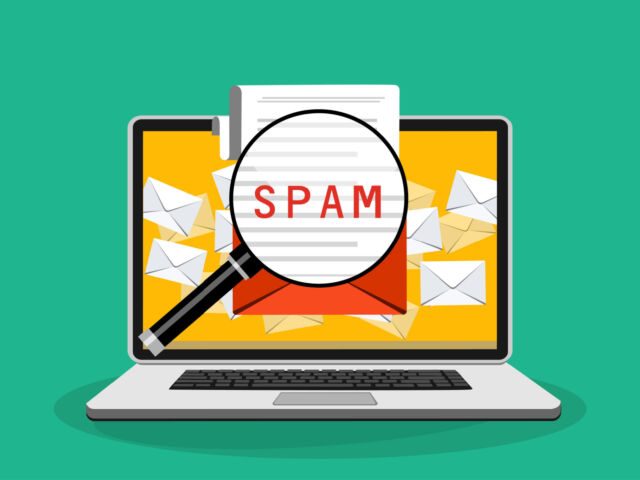We have often discussed keywords and their importance in your Search Engine Optimization (SEO) strategy. One thing about keywords that we really have not delved into is how you actually use them. So, once your keyword research is done and you have some good long tail keyword ideas, how to you actually implement your keywords?
Search engines tend to treat certain areas of your website with a little more importance than other areas. These areas are where you should be trying to use your keywords.
Where to put your keywords…
URL – Arguably the most important factor, your main URL (not what is after the first “/”) is definitely one of the best places to put your keywords if possible. As you will see with most of these keyword areas, the closer to the beginning of the URL, the better.
While most businesses aim to have their brand name in their root domain (e.g. www.google.com), it would actually help more if there is a completely specific keyword that you want your website to rank for to actually use that keyword (e.g. rather than google.com, using searchengine.com).
Aside from your main domain, it is also important for your subdomains, no matter how far down the line you go. Theoretically, as you get further from the root domain, your pages should be getting more specific. For example, you might have www.cats.com/breeds/himalayans, but you would not have www.cats.com/cats/cats. Try to follow this logic in the organization of your site and it will not only make more sense to search engines, but also to your users.
Your character limit for URLS, not that you should ever bump into it, is 2,000.
Title Tag – Sometimes called the SEO title, the title tag is the official title of your page in the eyes of a search engine. This is what will appear in the blue hyperlinked text in search results if your page is triggered, and in the top tab of the browser. Outside of your main URL, it is typically the most heavily weighted element on your page for search results. A maximum of 70 characters will be displayed in the search results, so try to keep it concise.
Meta Description – This area actually has no impact on your search rankings, but is often displayed in the search results, and if it contains the keywords that someone searched for, they will be bolded on the search engine results page (SERP). So, despite not actually having an impact on your search ranking, it still is a helpful place to put your keywords from a user perspective. If you see a description on Google that has bolded what you have searched for and the description looks like what you were looking for, you’ll probably click it. One more thing, I mentioned that these descriptions are often displayed, not always displayed. Search engines do not necessarily use the descriptions that you provide, but often enough, they do, so it is still worth creating them. A maximum of 160 characters will be displayed in the search results.
Header tags – Header tags are tags in the HTML code that describe the titles of sections on the page. The H1 tag is normally how your page title is displayed. It is often the same text as your Title Tag, but does not have to be. This title should be viewed as the user-friendlier one and the Title Tag as the more search engine-friendlier one. Subheadings on your page will usually be displayed with H2 tags, with sub-subheadings as H3 tags and so on, with the SEO weight decreasing as the header tag number increases.
Bold and italics – Confessedly, there really is not much evidence to support the bolding and italicizing of keywords. There MAY be an SEO boost; there may not be. If there is one, it is unnoticeable to the point of ignoring any boost altogether. Still, from a user experience (UX) standpoint, it is nice to see where in the content your keywords are mentioned to increase their perceived importance on the page.
Content – Your content needs to have your keywords. If a search engine comes across a page that is completely optimized for certain keyword but the keyword does not appear once in the actual content, it is hard to consider that page as valuable for people searching for that keyword. The opposite extreme is also a negative. You do not need to repeat your keywords every two lines. Our best recommendation: use your keywords 3-4 times per page. That, along with all the other signals you are sending, should be enough to demonstrate to search engines what your page is about without becoming spammy.
Image title and alt tags – With image title, I am referring to the actual file name of the image, not the title tag, which I will discuss later. Let’s go back to our cats.com example. Your image title and your alt tag are both fields that search engines look at for image search. The alt tag for images is a text field in the HTML code for an image that will sometimes display in place of an image if the image cannot. So let’s say you have a page about Himalayan cats (those big fluffy white cats). If you have an image on there called “Himalayan-cat.jpg” with the alt tag “Himalayan cat,” you are clearly demonstrating to search engines that this image involves a Himalayan cat. Now, it might appear in the image search results for the search query “Himalayan cat,” thus getting you traffic that you otherwise might not have thought about getting. For the most part, search engine optimization focuses on standard web results, but there’s no reason in skipping a short step to optimize your images if it means more relevant traffic.
Anchor text – Anchor text is the text that is hyperlinked to a certain page. Search engines look at this as a short description of what the page is about. For example, if you were linking to the Wikipedia article about Himalayan cats (I’m not obsessed with cats, I swear, really should have chosen a different example), it would make sense to link the actual keyword “Himalayan cats” to their corresponding Wikipedia page. Normally, this is something that you focus on with external links. Getting someone to link the anchor text of your actual keyword is significantly more valuable than getting “click here” as your anchor text.
Internal links can work very much in the same way. Search engines still crawl your site and see what anchor text you are using to link to certain pages. There is significantly less value here than in anchor text from external links, but it is still worth doing.
Don’t waste your time with…
The following are some areas that have been often mentioned as areas to place your keywords, but actually have no effect at all.
Meta-Keywords – Initially, this was a place that you could actually put keywords, but it quickly became abused. For this reason, search engines no longer consider it a source of information about a page. The only nice thing about this is that when you run into a search engine optimizer (also called an SEO) who says that this is a valuable place to put your keywords, you know you don’t want that guy working on your SEO.
Image title tags and link title tags – These are both text fields in HTML code that allow you to describe the image or link in question. Sometimes, these text descriptions will appear when you hover over the image or the link, and in the case of the image title tag, it may appear if the image can’t load, depending on your browser. Neither of these have any effect on your search rankings and can be skipped altogether, despite the minor UX benefits.
That sums up the main places to place (or to not waste time placing) your keywords on your own site. If I have missed anything, feel free to let me know in the comments.


